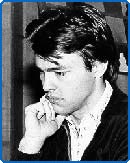(141) Eyeing Princess Diana´s death
Around 3 a.m. on Sunday August 31st 1997, I was writing a script for a TV series entitled The Case Against Darwin. I never normally work at that hour, but was unable to sleep.
Around twenty minutes into the first episode, to which I had given the title The triumph of Darwinism... and the beginning of the fall,
and having given a brief résumé of the events that led to Darwin becoming accepted by the scientific community, I started to list the points for the case against.
I had intended to begin with doubts about the reliability of radioactive dating techniques, which mean that we cannot be certain that the earth is of the great age that Darwinism needs for the changes to have been possible.
But although this might be a good point with which to commence a written critique, it struck me that for a TV exposition it was necessary to start with something which had the striking imagery necessary to keep the attention of an audience.
I therefore changed tack and chose as my first point the eye. I intended to have the direction in my script of the head of "a beautiful woman" being focused upon.
But then I thought of one specific lady.
Here is what I wrote:
But the intent here is to bury Darwin, not to praise him, so we shall open the case against by detailing several points aimed to show that Darwinian explanations are logically impossible in accounting for how some crucial developments in nature could have come about.
(Sound and image of a gavel being struck, and the following graphics appear on screen: – )
Point One: The development of the eye.
(Shot of Princess Diana. The camera closes in on her right eye until the pupil and iris fill the screen.)
It is fair to say that critics have raised one point more than any other single objection: the evolution of complex organs, especially the human eye.
The author himself revealed how troubled he was by this. In 1860 he wrote to Asa Grey (The voice of the actor playing Darwin is heard.)
"I remember when the thought of the eye made me go cold all over." (Here the closing in ceases and a new image appears: it is a graphic of an eye.)
The problem is how so intricate and interlocking a mechanism could have gradually come into existence, because all of the parts seem interdependent.
The next morning I realised that these words were written at almost the precise moment of her being pronounced dead,. But when I wrote them I had no way of knowing even that she had been hurt.
And then there was the dovetailing of the script with the events befalling her:thThe
The intent here is to bury Darwin, not to praise him...
Around twenty minutes into the first episode, to which I had given the title The triumph of Darwinism... and the beginning of the fall,
and having given a brief résumé of the events that led to Darwin becoming accepted by the scientific community, I started to list the points for the case against.
I had intended to begin with doubts about the reliability of radioactive dating techniques, which mean that we cannot be certain that the earth is of the great age that Darwinism needs for the changes to have been possible.
But although this might be a good point with which to commence a written critique, it struck me that for a TV exposition it was necessary to start with something which had the striking imagery necessary to keep the attention of an audience.
I therefore changed tack and chose as my first point the eye. I intended to have the direction in my script of the head of "a beautiful woman" being focused upon.
But then I thought of one specific lady.
Here is what I wrote:
But the intent here is to bury Darwin, not to praise him, so we shall open the case against by detailing several points aimed to show that Darwinian explanations are logically impossible in accounting for how some crucial developments in nature could have come about.
(Sound and image of a gavel being struck, and the following graphics appear on screen: – )
Point One: The development of the eye.
(Shot of Princess Diana. The camera closes in on her right eye until the pupil and iris fill the screen.)
It is fair to say that critics have raised one point more than any other single objection: the evolution of complex organs, especially the human eye.
The author himself revealed how troubled he was by this. In 1860 he wrote to Asa Grey (The voice of the actor playing Darwin is heard.)
"I remember when the thought of the eye made me go cold all over." (Here the closing in ceases and a new image appears: it is a graphic of an eye.)
The problem is how so intricate and interlocking a mechanism could have gradually come into existence, because all of the parts seem interdependent.
The next morning I realised that these words were written at almost the precise moment of her being pronounced dead,. But when I wrote them I had no way of knowing even that she had been hurt.
And then there was the dovetailing of the script with the events befalling her:thThe
The intent here is to bury Darwin, not to praise him...
... the thought of the eye made me go cold all over... Here the closing in ceases and a new image appears.
Diana, forever in the public eye.
The paparazzi, and the constant frenzy of media attention that accompanied her, were the direct cause of her fatal accident.
A woman photographed to death.
The paparazzi, and the constant frenzy of media attention that accompanied her, were the direct cause of her fatal accident.
A woman photographed to death.



Comments